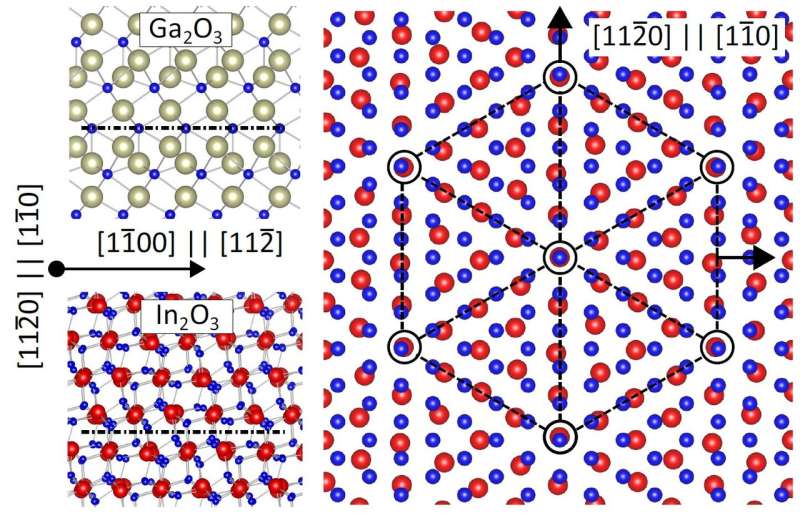New catalytic effect discovered for producing gallium oxide

Semiconducting oxides are a new class of materials that are currently enjoying great attention in the field of semiconductor technology. Gallium oxide is the archetypal example for its ability to handle extremely high voltages and its optical transparency in the deep ultraviolet region, thus promising a generation of electronic components with unprecedented performance. Such components are based on very thin, ultrapure semiconductor layers produced by special deposition methods. Physicists of the Paul Drude Institute for Solid State Electronics (PDI) have now drastically increased the yield of gallium oxide with a catalytic effect observed for the first time during crystal growth. This effect is not only a new discovery; it can also be ported to other materials with similar properties to those of gallium oxide. The results appear in Physical Review Letters.
Physical vapor deposition (PVD) is one of the key technologies in manufacturing thin, highly pure semiconductor layers. One particular form of PVD is molecular beam epitaxy (MBE), which the physicists used in their investigations. The reaction chemistry during MBE is far simpler than in other, more complex semiconductor production technologies. The PDI researchers had therefore not expected to observe a catalytic effect during the MBE process. They have declared this phenomenon as a new mechanism, which they have dubbed metal-exchange catalysis.
Their experiments revealed that adding the element indium drastically increases the growth rate of gallium oxide during MBE. They also revealed that, in the presence of indium, gallium oxide still forms under conditions in which it could never form without the added element. Moreover, gallium oxide forms a special crystalline structure that is uniquely suitable for developing so-called heterostructures of gallium oxide and indium oxide layers that are essential in many components.
Given the simple reaction chemistry of MBE, the researchers are convinced that the effect observed is generally valid and thus applicable to all materials possessing similar properties to those of gallium oxide. First author of the study Dr. Patrick Vogt, who researches at PDI, adds that "the metal-exchange catalysis discovered delivers an entirely new approach to growing crystalline materials, and very likely opens a new pathway towards previously unimaginable semiconductor components."
Patrick Vogt is a junior scientist and a physicist by training. He completed his doctorate at PDI on the topic of physical chemistry and semiconductor physics – in the scope of the Leibniz ScienceCampus GraFOx. GraFOx is a collaborative interdisciplinary network for top-level, innovative materials research, specifically devoted to oxides.
More information: Patrick Vogt et al. Metal-Exchange Catalysis in the Growth of Sesquioxides: Towards Heterostructures of Transparent Oxide Semiconductors, Physical Review Letters (2017). DOI: 10.1103/PhysRevLett.119.196001
Journal information: Physical Review Letters
Provided by Forschungsverbund Berlin e.V. (FVB)



















